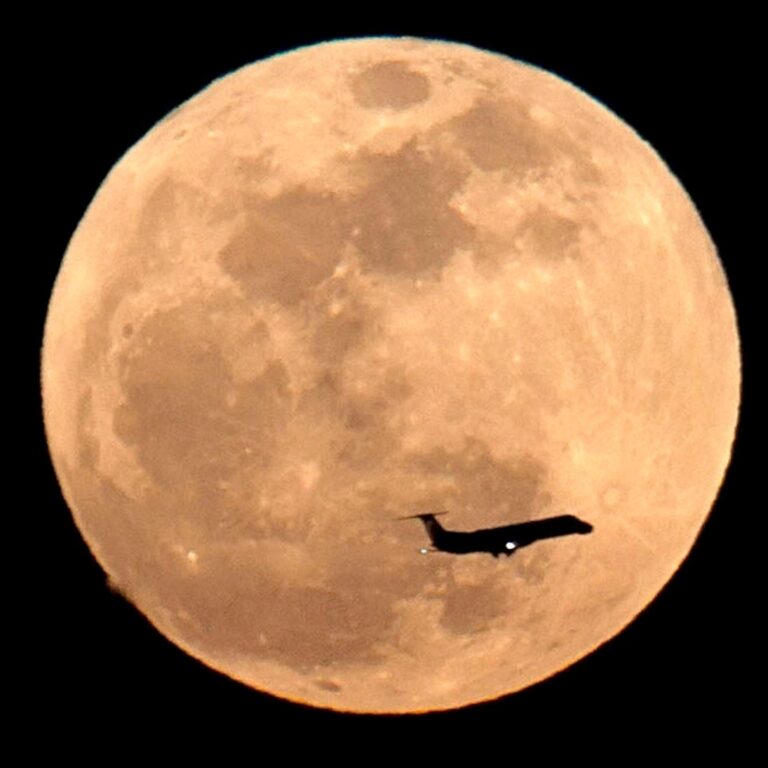Australia is gearing up for a spectacular celestial event as the biggest and brightest supermoon of the year prepares to light up the night sky. Scheduled to peak soon, this supermoon promises to offer breathtaking views for skywatchers across the continent. Experts explain how this astronomical phenomenon occurs and share tips on the best times and locations to witness the lunar spectacle. Whether you’re an avid astronomer or simply looking for a stunning night-time display, this supermoon is not to be missed.
Supermoon Spectacle Set to Dazzle Australian Skies This Month
Australia is in for a celestial treat as this month’s supermoon promises to be the largest and brightest we’ve seen all year. Occurring when the Moon is at its closest approach to Earth, this cosmic event will see the lunar surface appear up to 14% bigger and 30% brighter than a typical full moon. Skywatchers are encouraged to find open spaces away from city lights to fully appreciate the lunar glow illuminating the night sky. With clear conditions predicted, it’s the perfect opportunity to capture breathtaking photos or simply soak in the serene beauty of a supermoon evening.
For those planning to experience the spectacle, here are some top tips:
- Timing is everything: Peak visibility is expected just after moonrise, lasting for several hours.
- Location matters: Higher altitudes and coastal areas often provide clearer views free from light pollution.
- Gear up: Binoculars or telescopes can enhance details like craters and lunar maria.
- Check the weather: Cloud cover can obscure the view, so stay updated on local forecasts.
| Date | Moonrise Time (AEST) | Visibility Level |
|---|---|---|
| June 24 | 5:30 PM | Excellent |
| June 25 | 6:15 PM | Good |
| June 26 | 7:00 PM | Moderate |
Best Spots Across Australia for Unobstructed Supermoon Viewing
For those eager to witness the supermoon in all its luminous glory, Australia offers several prime locations boasting clear skies and minimal light pollution. Western Australia’s Cape Le Grand National Park is renowned for its pristine beaches and sweeping views of the horizon, perfect for uninterrupted moon gazing. Meanwhile, in Victoria, the elevated vantage points of the Grampians National Park provide stunning panoramic backdrops, enhancing the celestial spectacle. Coastal spots like Byron Bay in New South Wales also draw night sky enthusiasts, thanks to unobstructed ocean views and a tranquil atmosphere conducive to skywatching.
Urban dwellers need not miss out entirely; several city locations offer surprisingly good vantage points. The Sydney Observatory Hill Park and Melbourne’s Royal Botanic Gardens have open spaces where the supermoon can be easily viewed above city lights. Below is a quick reference table of top locations, distance from major cities, and best times to arrive for optimal viewing conditions:
| Location | Distance from Nearest City | Recommended Arrival Time |
|---|---|---|
| Cape Le Grand National Park | 620 km from Perth | 1 hour before moonrise |
| Grampians National Park | 260 km from Melbourne | 30 minutes before moonrise |
| Byron Bay | 165 km from Brisbane | 45 minutes before moonrise |
| Sydney Observatory Hill Park | Central Sydney | Nightfall to moonrise |
| Royal Botanic Gardens, Melbourne | Central Melbourne | Nightfall to moonrise |
- Bring a telescope or binoculars for detailed viewing of lunar craters.
- Dress warmly-even in Australia, nights can get chilly.
- Check local weather forecasts to ensure clear skies.
- <
- Bring a telescope or binoculars for detailed viewing of lunar craters.
- Dress warmly – even in Australia, nights can get chilly.
- Check local weather forecasts to ensure clear skies.
- Arrive early to secure a good spot and acclimate your eyes to the dark.
- Avoid using bright lights such as phone screens or flashlights, or use red filters to preserve night vision.
- Bring a comfortable chair or blanket for prolonged viewing sessions.
Expert Tips and Safety Advice for Photographing the Supermoon Event
Capturing the supermoon in all its glory demands both preparation and the right equipment. For the sharpest shots, use a DSLR or mirrorless camera equipped with a telephoto lens of at least 200mm to bring the moon’s details into clear focus. Set your camera on a sturdy tripod to eliminate motion blur, and opt for manual settings: a low ISO (100-200), a narrow aperture (f/8-f/11), and a shutter speed between 1/125 and 1/250 seconds to avoid overexposure. Don’t forget to disable your flash and use a remote shutter release or the camera’s timer to reduce shake. Early arrival to your chosen spot is key to securing the best vantage point free from obstructions and light pollution.
Safety remains paramount during this celestial event, especially if you’re venturing to remote locations or elevated viewpoints. Always check the weather forecast and dress accordingly, ensuring you’re prepared for potential chilly night temperatures. If hiking or traveling in unfamiliar areas, inform someone about your plans and carry a fully charged phone, flashlight, and water. When photographing near roadways, remain aware of traffic and keep a safe distance. Consider these tips to make your supermoon experience both stunning and secure:
- Scout locations earlier in the day to familiarize yourself with terrain and lighting.
- Bring red-light flashlights to preserve night vision.
- Use apps like PhotoPills or The Photographer’s Ephemeris to track moonrise and set precise exposure settings.
- Respect wildlife and local regulations – avoid disturbing natural habitats.
Insights and Conclusions
As the biggest and brightest supermoon of the year prepares to grace Australian skies, skywatchers are encouraged to step outside and witness this rare celestial spectacle. Whether viewed from bustling city streets or tranquil rural settings, the lunar event promises a stunning display that connects us all under the same glowing orb. Stay tuned to local weather updates to ensure clear viewing conditions, and don’t miss the chance to experience one of nature’s most captivating shows.




